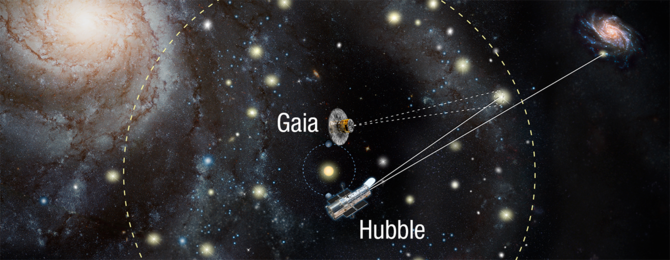Using the power and synergy of two space telescopes, astronomers have made the most precise measurement to date of the universe’s expansion rate. 
The results further fuel the mismatch between measurements for the expansion rate of the nearby universe, and those of the distant, primeval universe — before stars and galaxies even existed. This so-called “tension” implies that there could be new physics underlying the foundations of the universe. Possibilities include the interaction strength of dark matter, dark energy being even more exotic than previously thought, or an unknown new particle in the tapestry of space. Combining observations from NASA’s Hubble Space Telescope and the European Space Agency’s (ESA) Gaia space observatory, astronomers further refined the previous value for the Hubble constant, the rate at which the universe is expanding from the big bang 13.8 billion years ago. But as the measurements have become more precise, the team’s determination of the Hubble constant has become more and more at odds with the measurements from another space observatory, ESA’s Planck mission, which is coming up with a different predicted value for the Hubble constant. See: http://hubblesite.org/news_release/news/2018-34 |
